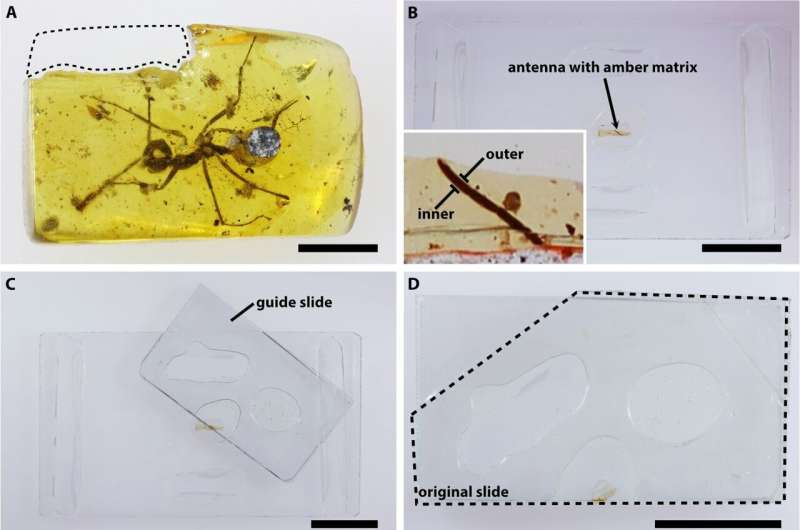June 17, 2024 report
This article has been reviewed according to Science X's editorial process and policies. Editors have highlighted the following attributes while ensuring the content's credibility:
fact-checked
peer-reviewed publication
trusted source
proofread
Researchers discover that ants from millions of years ago used the same sensory organs as modern ants

A multidisciplinary team of scientists from several institutions in Japan, working with colleagues at the American Museum of Natural History, has found evidence that some types of ants that lived during the Cretaceous Period had sensory organs for communication similar to those used by many modern ant species.
In their study, published in the journal Science Advances, the group developed a new imaging technique to allow for close study of microstructures embedded in ancient amber to learn more about ants from millions of years ago.
Prior studies of ants embedded in amber from millions of years ago have shown that they communicated to survive—their close proximity and positioning inside amber samples suggests they were communicating somehow, but because amber causes light to scatter, it is impossible to use conventional microscope technology to get a better look at them.
In this new study, the research team overcame this problem by developing a new imaging technology called "rotating confocal laser scanning microscopy." Unfortunately, the process is destructive and involved cracking open the amber and cutting off parts of the sample under study—in this case, ant antennae and heads. Each of the sample pieces was then rotated as it was scanned.
Using the new technique, the researchers studied ants embedded in amber dated to approximately 100 million years ago. They were able to get a close-up view of what they suspected were antennal sensilla—organs used by modern ants to "smell" pheromones released by other ants.

The researchers then compared the images with similar images made of modern ants. They found them to be nearly identical and located in the same places on the bodies of both ancient ants and modern ants.
Prior research has shown that modern ants use pheromones to communicate as a way to organize hunts, for defense, and even for reproduction. Because the organs on the ancient ants were so similar, the researchers suggest it is likely they used them for the same purposes.
More information: Ryo Taniguchi et al, Sensory evidence for complex communication and advanced sociality in early ants, Science Advances (2024). DOI: 10.1126/sciadv.adp3623
Journal information: Science Advances
© 2024 Science X Network





















